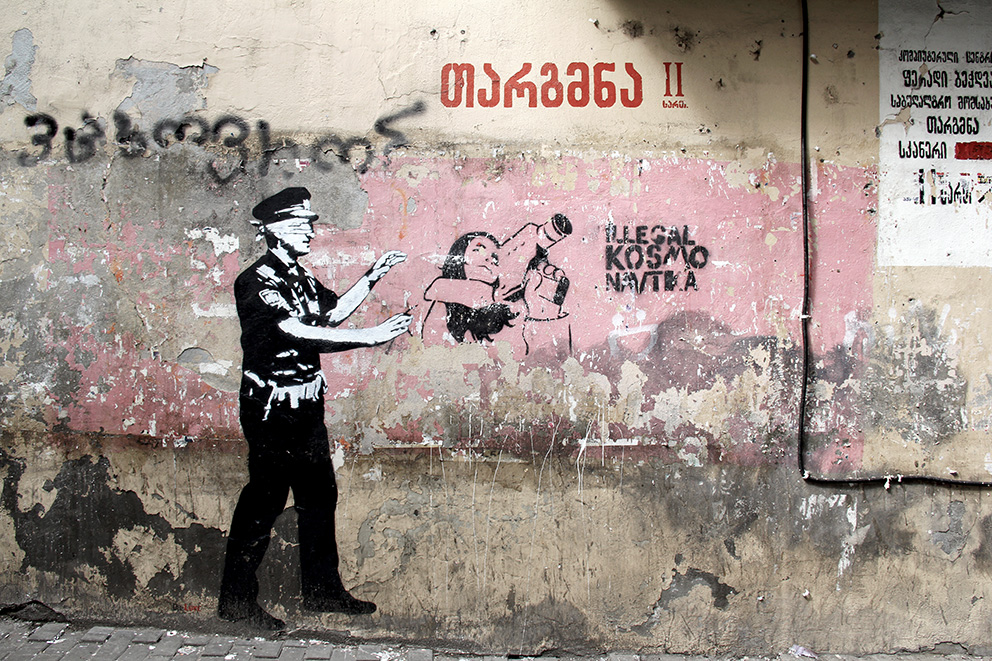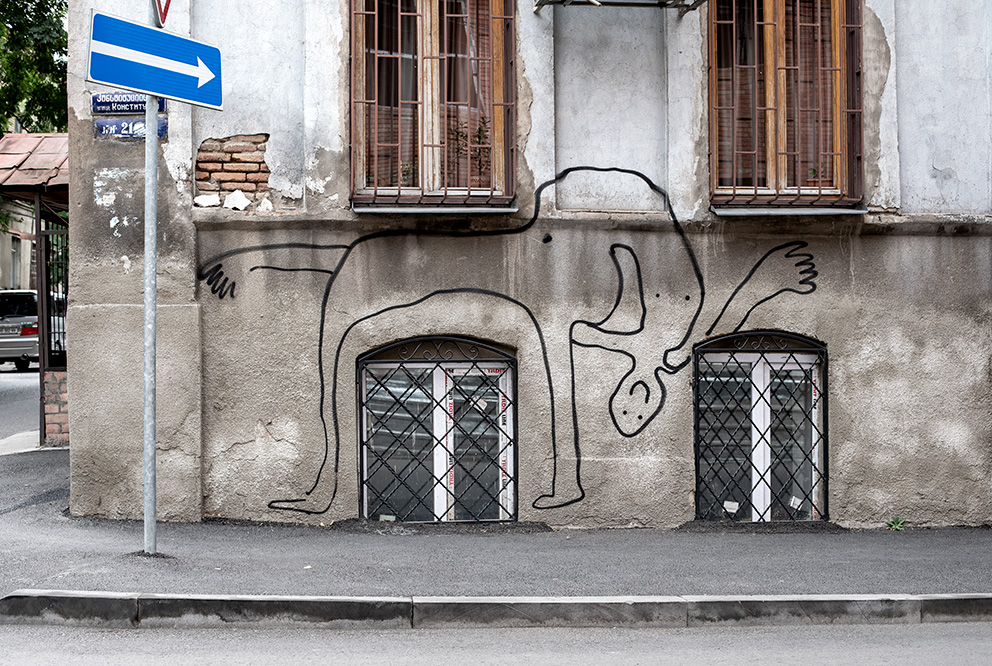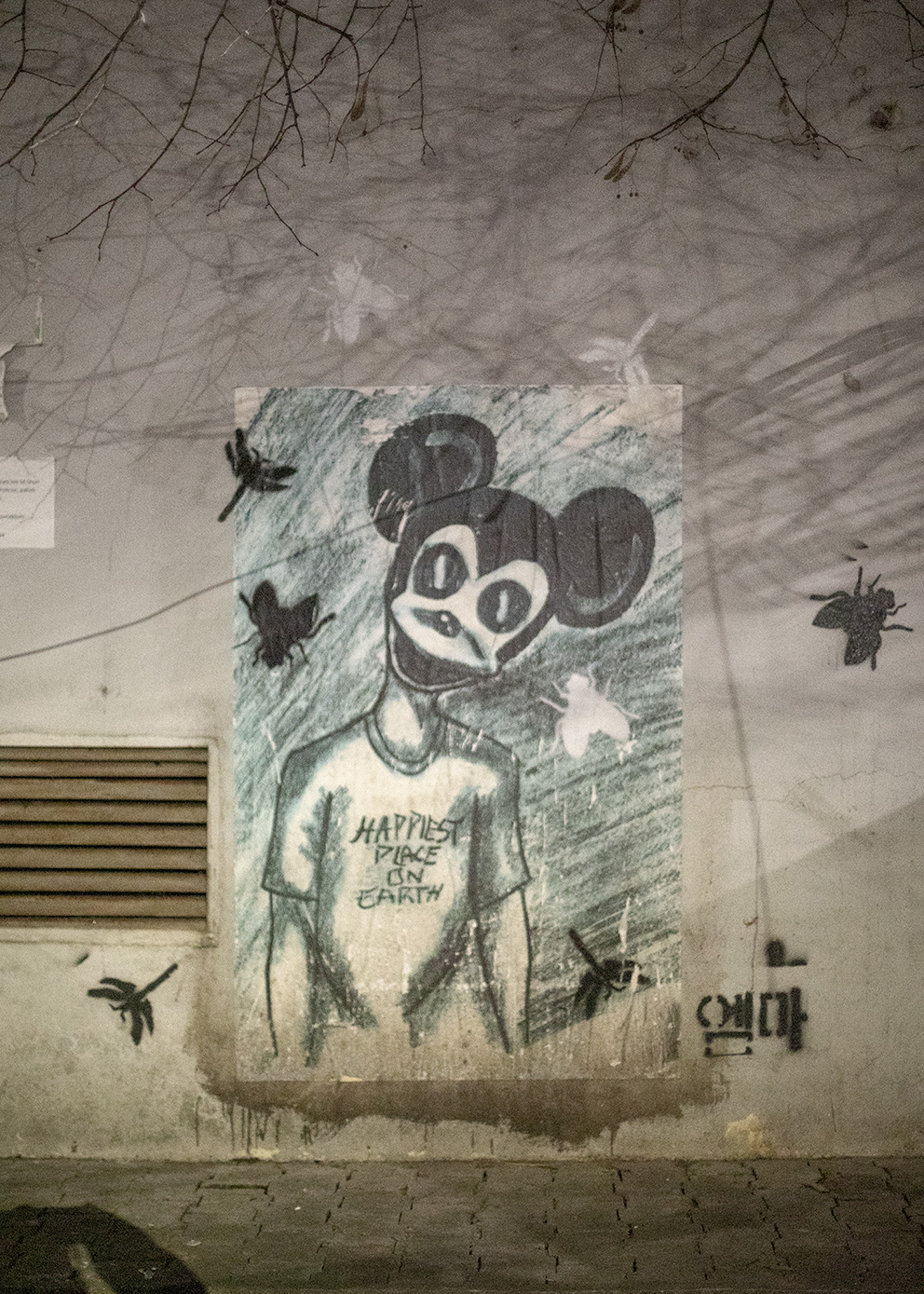Graffiti
Five selected photographs from an ongoing series. This ongoing collection features photographs of graffiti works captured in city centers from 2013 to 2024, including Bucharest in Romania, Tirana in Albania, Tbilisi, Rustavi, and Gori in Georgia, Tel Aviv and Or Akiva in Israel.
Read More
These artworks were discovered in somewhat distant areas, away from the gaze of most tourists. They were chosen for their significance and also because they reflected something regarding the artist who painted them and the community in which he lived – a struggle for a better place to live, an aspiration for freedom, a desire for a meaningful life, an amused aesthetic expression or a cry for freedom, a search for values or a warning against injustice.
A primary reason for choosing to photograph these works, as well as for choosing a certain frame (angle of photography, width and depth of field, the moment of photography, intensity of natural lighting, etc.), was both material and visual – the substrate on which they were painted (buildings, walls, niches) and the urban setting that bounds them and to which they refer. This is because the urban landscape and the existence of life in it have a meaning that engages the pictorial content and together, they contribute to a statement that has a personal and all-human meaning and also a distinctive significance that relates to place and time.
A few constraints (the camera, the lenses, the artist’s height in relation to the graffiti, etc.) and the goal of presenting the graffiti as accurately as possible to the impression it made on the photographer-observer also influenced the frame’s selection. This is how photography occasionally adds an aspect of aesthetic criticism to the graffiti works and not only to the content they are meant to criticize. Even if the works did not reflect her artistic preferences, their overall meaning was a more significant factor for her when she decided to capture them.
The boldness of some graffiti artists and their daring in defying the formal rules in the street (“painting on walls is a violation of the law”) and the existence of this art in the public area are also related to the decision to photograph existing works of art and use them as components within a new work of art, which is distinguished, among other things, by a different frame, a different medium, and other artistic decisions. In this way, important graffiti is a manifestation of the values of freedom and liberty. In this case, the photographs preserve pieces that will be harmed by the forces of time and nature; Municipal workers will paint them over, and occasionally locals whose opinions and values differ from those of the graffiti artists will vandalize them.




